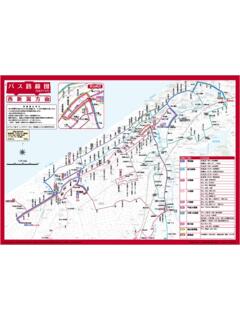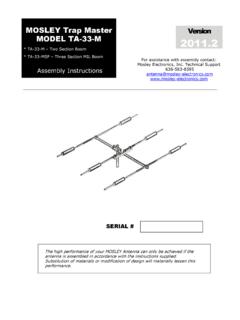Transcription of TA 101 Official Introduction to Transactional Analysis ...
1 Introduction to TA .. 101 Notes by Dave Spenceley TSTA - - 00447710419378 @ytcitraining Introduction to Transactional Analysis - TA 101 Notes by Dave Spenceley TSTA Feb 2016 edit /// @ytcitraining 1 1 TA 101 Official Introduction to Transactional Analysis - by Dave Spenceley TSTA The 101 course is the Official entry gate to all further TA training these notes have been developed to be given to participants on the YTCi training programmes. Dave qualified as a Transactional Analyst in 1990 and ran his first 101 course in September 1990. What is TA: Transactional Analysis is a theory of personality and a systematic psychotherapy for growth and personal change: The goals of TA in practice can be described as: 1. Autonomy freedom from archaic and restrictive patterns of behaviour. 2. Intimacy - free exchange of strokes without manipulation. 3. Spontaneity freedom to act in the here and now.
2 Eric Berne, borne in 1910, in Montreal, Canada, was a pioneer and radical in the field of psychiatry. Berne died on the 15th July 1970 aged only 60 years of age and only 9 years after his first book on TA was published. He left behind him a profound and systematic theory of personality and a range of tools which have been used throughout the world to promote health and growth. Berne was initially trained in psychoanalysis, he started writing about TA in the 1957. His first book on TA was published in 1961 TA in Psychotherapy and his last book What do you say after you say hello was published after his death. Therefore, the initial rapid development of TA took place in a very short period of time. May of the models which were developed by Berne and his colleagues continue to be central to TA theory and practice however TA practice and theoretical understanding continue to develop often in different directions.
3 Berne started in psychoanalysis with Paul Federn in 1947. Federn had spent time with Freud in the Vienna school pf psychoanalysis. Later Berne became the analysand of Erik Erikson. Both of these analysts influenced Berne s theoretical development. For an excellent summary of the life and work of Berne see Ian Stewart s book Eric Berne 1992. "What do you say after you say Hello" opens with 4 questions: 1. What do you say after you say hello? 2. How do you say hello? 3. What do you say after others say hello? 4. Why do we and others spend so much of our time not saying hello? Berne deliberately used simple metaphors and language in order to make his approach to psychotherapy accessible for all, and he described people as basically being OK. However, in their Introduction to TA .. 101 Notes by Dave Spenceley TSTA - - 00447710419378 @ytcitraining Introduction to Transactional Analysis - TA 101 Notes by Dave Spenceley TSTA Feb 2016 edit /// @ytcitraining 2 2 early life they make decisions, which lead them to the not OK position or a position of believing others are not OK (or both).
4 He talked of the OK PRINCE and the not OK FROG . "OKness" can be described as having intrinsic worth and value. Berne believed that every person: Can change. That people are responsible for their own lives. That everyone is born OK. Recent developments within TA have emphasised people s desire to belong, alongside the need for autonomy. TA uses a cognitive behavioural approach in teaching clients to change their thinking and the related behaviours and TA practitioners often teach clients the concepts being used. TA is a social psychology analysing the interactions and relational process within their social context this emphasised in the systemic approach to understanding TA theory and practice. TA works with the affect; people let go of their old feelings, expressing their emotions in the here and now in order for them to be more fully alive in the here and now. TA is this is reflected in the current emphasis on relational psychotherapy.
5 TA is contractual in its approach which Berne emphasised and often differentiates TA from other approaches. There are four fields of application You can qualify as a CTA (Certified Transactional Analyst) in each of the four fields with the same level of requirements and examination. Psychotherapy is defined as healing the hurts of the past in order to live freely in the here and now. Psychotherapy is practiced with individuals and in groups and can be brief or long term. Counselling: Coaching, team development, conflict resolution, and mentoring, as well as family, relationship and pastoral care and what is described as psycho-social counselling. TA counselling emphasises the systemic resources of the client; internal and external and seeks to facilitate using the client s resources to promote autonomy and intimacy Organisational: The organisation is the client and the contract is for development of the organisation as a whole, may look at the financial and management structure of the organisation.
6 Education: TA applied in education settings supporting the educators. Introduction to TA .. 101 Notes by Dave Spenceley TSTA - - 00447710419378 @ytcitraining Introduction to Transactional Analysis - TA 101 Notes by Dave Spenceley TSTA Feb 2016 edit /// @ytcitraining 3 3 International and national Organisations: There are regulating organisations which control training standards, and ethics as well as being the focus for practitioners throughout the world. In the UK the largest TA organisation is UKATA the United Kingdom Association of Transactional Analysis . UKATA is a member of the HIPS section of the United Kingdom Council for Psychotherapy UKCP European Association of Transactional Analysis , (EATA). Internationally the International Transactional Analysis Association, (ITAA). EATA and ITAA have an Official handbook which contains all the requirements and guidelines regarding TA practice and Section 5 of the handbook contains the detailed core competencies developed for each field of application and training for each area.
7 (See the EATA website for the complete handbook). UKATA has developed a UK version of the handbook which has additional requirements in order for trainees to qualify as TA psychotherapists and be registered with the UKCP. Schools of TA in the first wave of TA s development three schools were developed and today practitioners of TA normally use an integration of the three schools. The classic School; based on the work of Berne and Steiner and their close associates, this includes ego state Analysis , Transactional Analysis proper, script and game Analysis . The Redecission School; developed by Bob and Mary Goulding who integrated TA with Gestalt to make an active, dynamic and energetic approach to TA practice. The Cathexis School; developed initially by Jacquie Schiff who worked with clients who had been diagnosed with severe mental health problems. Her approach was very controversial and she left the TA community in 1970, however she and her colleagues developed very useful concepts including discounting and symbiosis- a collection of theories normally described as passivity material.
8 Recent developments: other schools of TA are now recognised and can be thought of as the second wave of TA development. Each of these approaches has significantly influenced TA practice in recent years and TA practitioners integrate elements from these schools with the original TA concepts. Relational school; best described by Charlotte Sills and Helena Hargeden in their book Transactional Analysis a Relational Approach . This school emphasises the empathic relationship and transference recognising that it is the therapeutic relationship which is central to the healing process. Integrative psychotherapy; developed by Richard Erskine and like relational TA emphasises the empathic nature of the relationship in TA practice. TA and Body psychotherapy; practitioners who emphasise the need to work with the client s body in psychotherapy. TA body psychotherapy is best described by Bill Cornell and emphasises how many unconscious embodied script issues and trauma can be worked with through the focus of attention being in body work.
9 Introduction to TA .. 101 Notes by Dave Spenceley TSTA - - 00447710419378 @ytcitraining Introduction to Transactional Analysis - TA 101 Notes by Dave Spenceley TSTA Feb 2016 edit /// @ytcitraining 4 4 Systemic approaches; Very important in the counselling field of TA the emphasis is the client in their systems. Constructivism; while not a school of TA several authors have written about constructivism and TA emphasising the co-created nature of the TA practice and how script is a narrative constructed in order to make meaning of experience. FOLKS NEED STROKES Berne: A stroke is a unit of recognition. Woollams and Brown: ( Transactional Analysis 1978) A stroke is a unit of attention which provides stimulation to an individual . Physical stimulation is a basic human need. Berne referred to research (Spitz 1945) in which it was noted that children deprived of physical stimulation may sink into decline and become prone to death.
10 Berne described this as stimulus hunger, Berne believed that as we develop our stimulus hunger develops and is partially transferred to a psychological version which Berne describes as recognition hunger. Therefore, a working definition of a stroke is: A transaction which provides a person with recognition and stimulation. Recent research into child development has not only confirmed Berne s ideas it has actually gone much further than Berne anticipated, we now know that the infant s development is directly impacted upon by the relationally and affectively attuned relationship with the child s caretakers See Affect regulation and the origin of the self by Allun Schore for detailed Analysis and description of this process, or a much more accessible book: Why love matters by Sue Gerhardt which presents the work of Schore and others. TYPES OF STROKES: INTERNAL: fantasies, self praise, and other forms of self stimulation.






